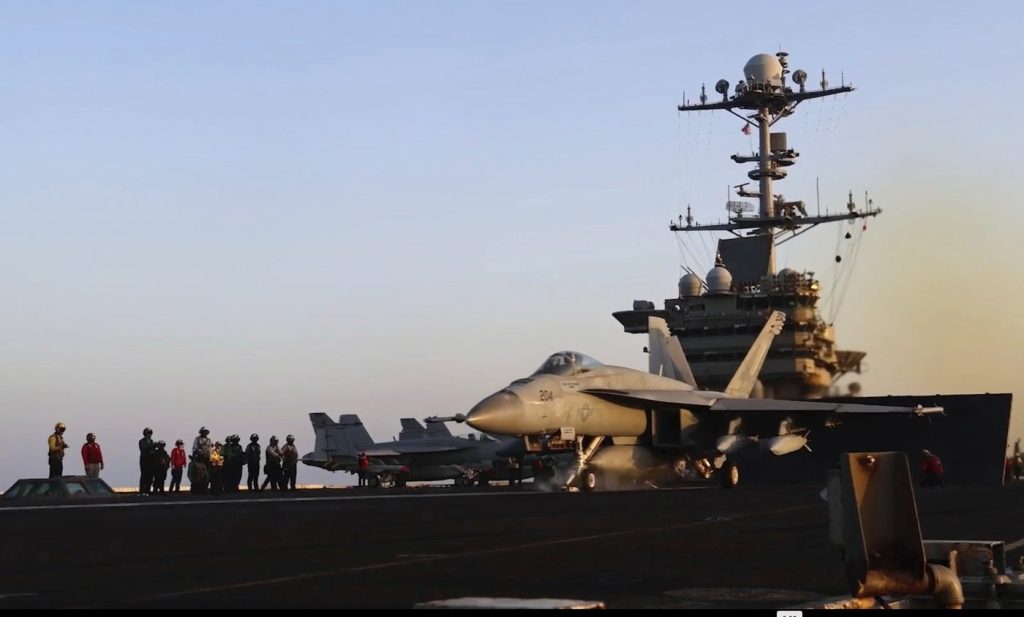DUBAI, United Arab Emirates - The United States, under President Donald Trump, has initiated a fresh wave of intense airstrikes directed at Yemen's Houthi rebels. Over the past weekend, these strikes reportedly resulted in the deaths of at least 53 individuals, including children, and left many others wounded. This military campaign is part of a broader strategy by Trump to exert pressure on Iran, the Houthis' primary backer.
The recent airstrikes were launched in response to a series of Houthi attacks on over 100 merchant vessels from November 2023 to January 2024, which included the sinking of two ships and the death of four sailors. The Houthi leadership justified these assaults as part of their efforts to end the Israeli conflict with Hamas in the Gaza Strip. Furthermore, these attacks have significantly elevated the Houthis' profile within the Arab world while suppressing criticism of their human rights violations and crackdowns on dissent.
Trump announced on his social media platform, Truth Social, that the administration's focus on the Houthis stems from their ongoing “campaign of piracy, violence, and terrorism.” He highlighted the disruptions caused by Houthi attacks in the Red Sea and Gulf of Aden, critical maritime routes for energy and cargo transport between Asia and Europe. Trump stated, “We will use overwhelming lethal force until we have achieved our objective.”
This is not the first instance of U.S. military action against the Houthis. Under former President Joe Biden, airstrikes began in January 2024, with over 260 missions reportedly conducted by that time. During Biden's term, military officials sought to minimize civilian casualties, focusing on avoiding escalation in Yemen's already complex war involving the Houthis and their allies against Yemen’s exiled government and its backers, including Saudi Arabia and the UAE.
In contrast, the Trump administration seems inclined towards a more aggressive approach. U.S. Secretary of State Marco Rubio emphasized on CBS News that the mission to eliminate Houthi threats to global shipping will persist, claiming that key figures involved in missile launches are no longer operational.
The new U.S. air campaign raises concerns of retaliatory actions from the Houthis. Following the strikes, they announced intentions to target Israeli ships navigating Middle Eastern waters as retribution for Israel's blockade on Gaza. Such declarations indicate a potential escalation of hostilities both at sea and on land, particularly against key oil infrastructure in Saudi Arabia and the UAE, both of which have been significantly involved in Yemen's ongoing conflict since 2015.
Moreover, the Houthis could broaden their attack scope beyond military vessels, impacting commercial shipping and exacerbating regional tensions. Analysts from the Eurasia Group suggested that Gulf Arab states may distance themselves from direct conflicts but face ancillary threats to their oil assets.
Iran’s role in this conflict remains pivotal, having historically provided support to the Houthis, denying any direct involvement. With the Houthis forming a crucial part of Iran's “Axis of Resistance,” Tehran has been careful with its rhetoric, especially amidst rising tensions following U.S. airstrikes. Iranian officials have emphasized the autonomy of the Houthis while refraining from escalating threats against the U.S. or its allies.
As the situation continues to unfold, President Trump’s administration is reportedly considering targeting Iranian officials and military personnel assisting the Houthis. This military strategy aims to convey a clear message to Iran, pushing for negotiations over its nuclear program while reaffirming U.S. commitment to countering Iranian influence in the region.










